
Alpujarra Artist Residency
2026
CALL FOR ARTISTS
CLICK HERE
The Alpujarra Art Residency provides an environment where artists can focus on creating, experimenting, and growing. A retreat away from your familiar surroundings, where you can gain fresh perspectives and enjoy uninterrupted creative time. A better suited location than the Alpujarra is hardly imaginable, with its lovely white villages, the peace and quiet of rural surroundings, the stunning mountains and valleys and the spectacular views over the Mediterranean.

The view over the Mediterranean Sea from one of the art studios is breathtaking.

Spanish artist Myriam Vela Blanca shows what she has been working on in the studio.
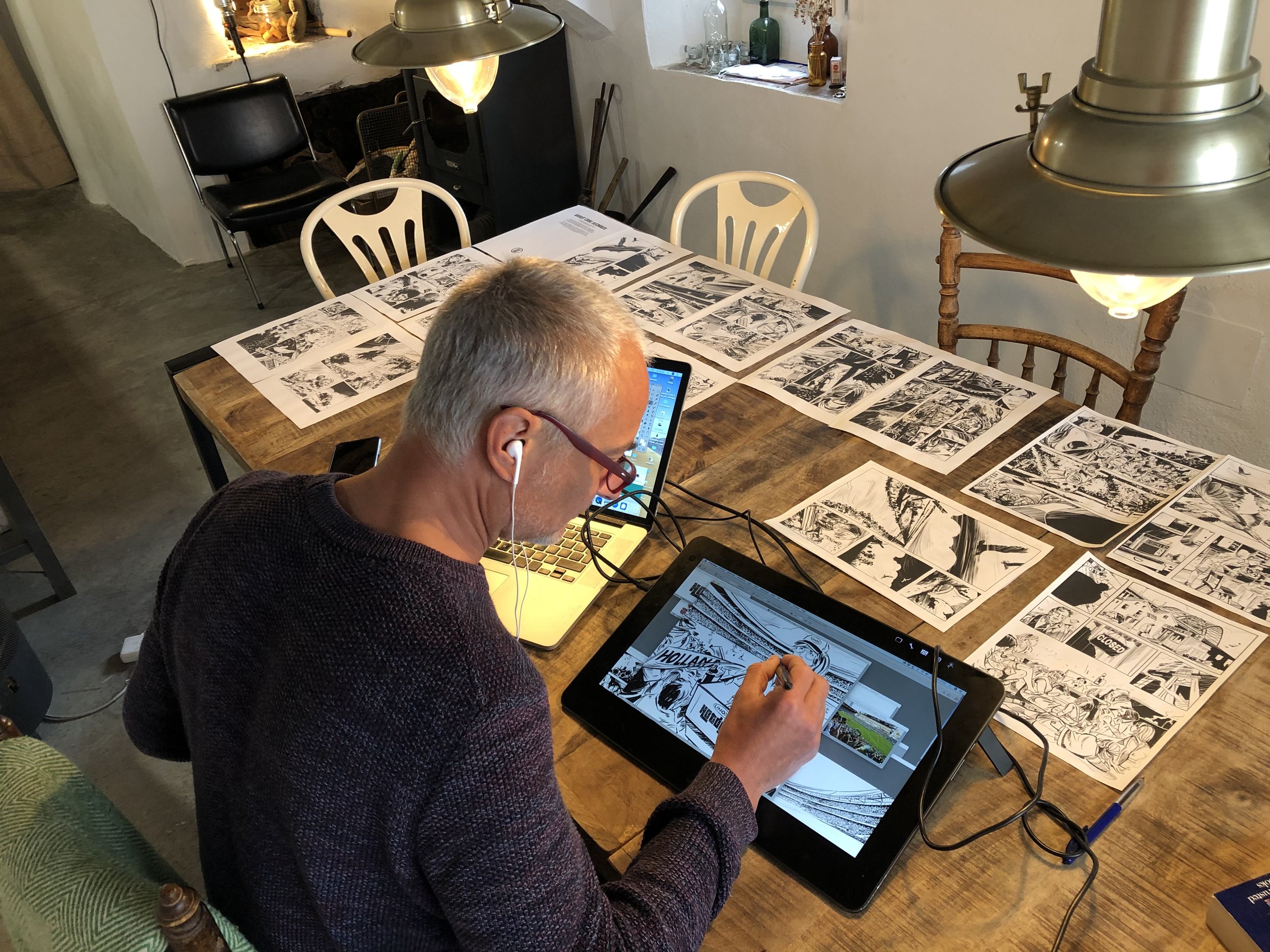
Dutch artist Richard Raaphorst worked on his first horror comic book at Casa 3.
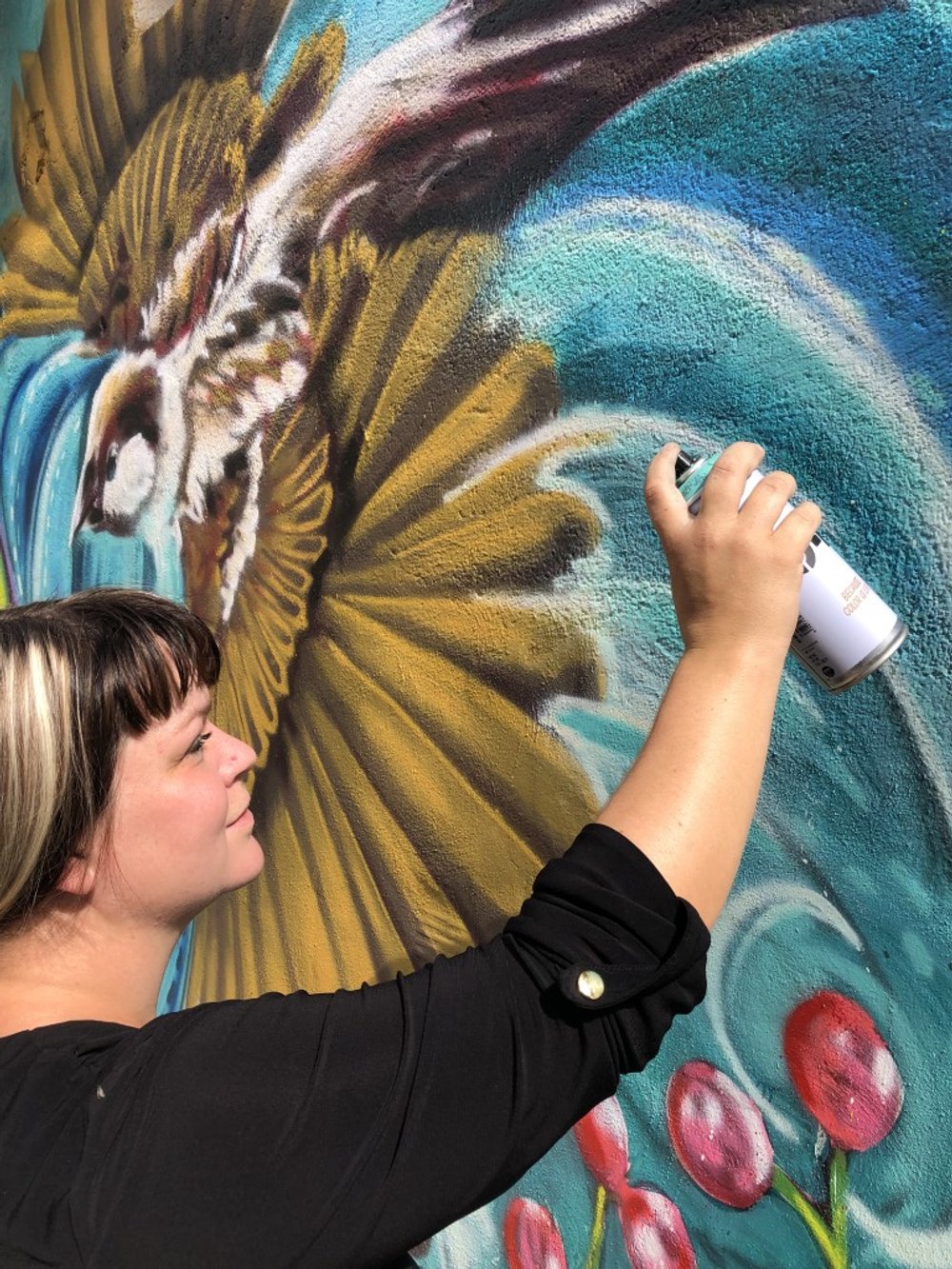
Canadian artist Brie Adkins was the first to create an artwork in the streets of Polopos.

The mural by Brie Adkins at the entrance of the village.

An excerpt from the poster for the exhibition featuring photos of fellow villagers by Marcelo von Schwartz.

Marcelo von Schwartz in our gallery space with some of the photo's he took of our neighbours.

The people of Polopos all came to see the exhibition. They were allowed to take their portrait home afterwards.

Dutch artist Boxie arrived in Polopos in style with his old Mercedes which is constantly painted over.
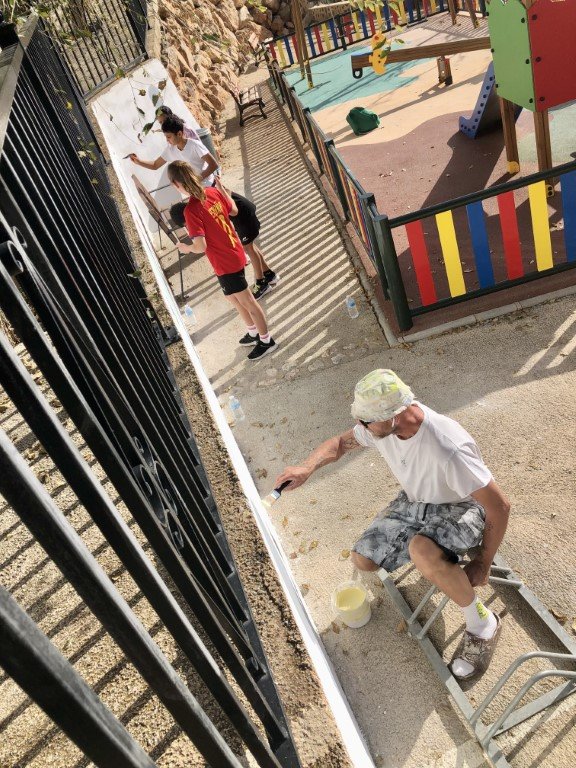
We invited a class from the primary school at the bottom of the mountain to help Boxie make a mural in Polopos.

The kids loved it. The school instructed them not to write or draw anything divisive. Otherwise they were free to do what they wanted.

In the collegio, the school in La Mamola, Boxie invited all 160 pupils from 4 to 13 years old to help with a mural on the school playground.

After school the kids were invited to paint on Boxie's car. They liked this even better than helping with the mural!

Dutch actress Monic Hendrickx stayed with us in Casa 3 while filming a short Sci-Fi movie for which we scouted locations. We hosted the entire production team in Polopos.

Flamenco music on the main square next to restaurant Julia.
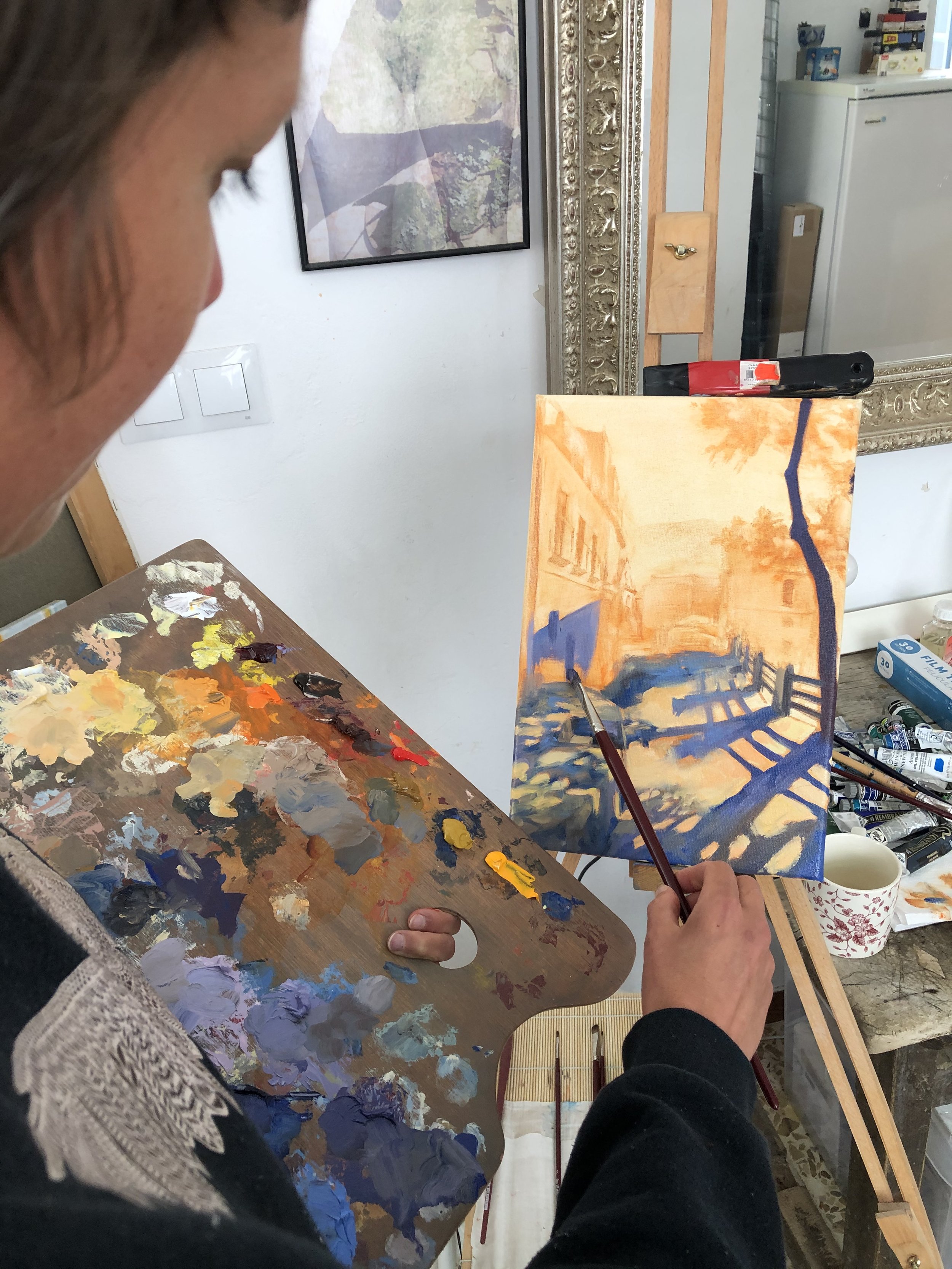
Dutch artist Sarina Reilingh concentrated on painting townscapes in Polopos.
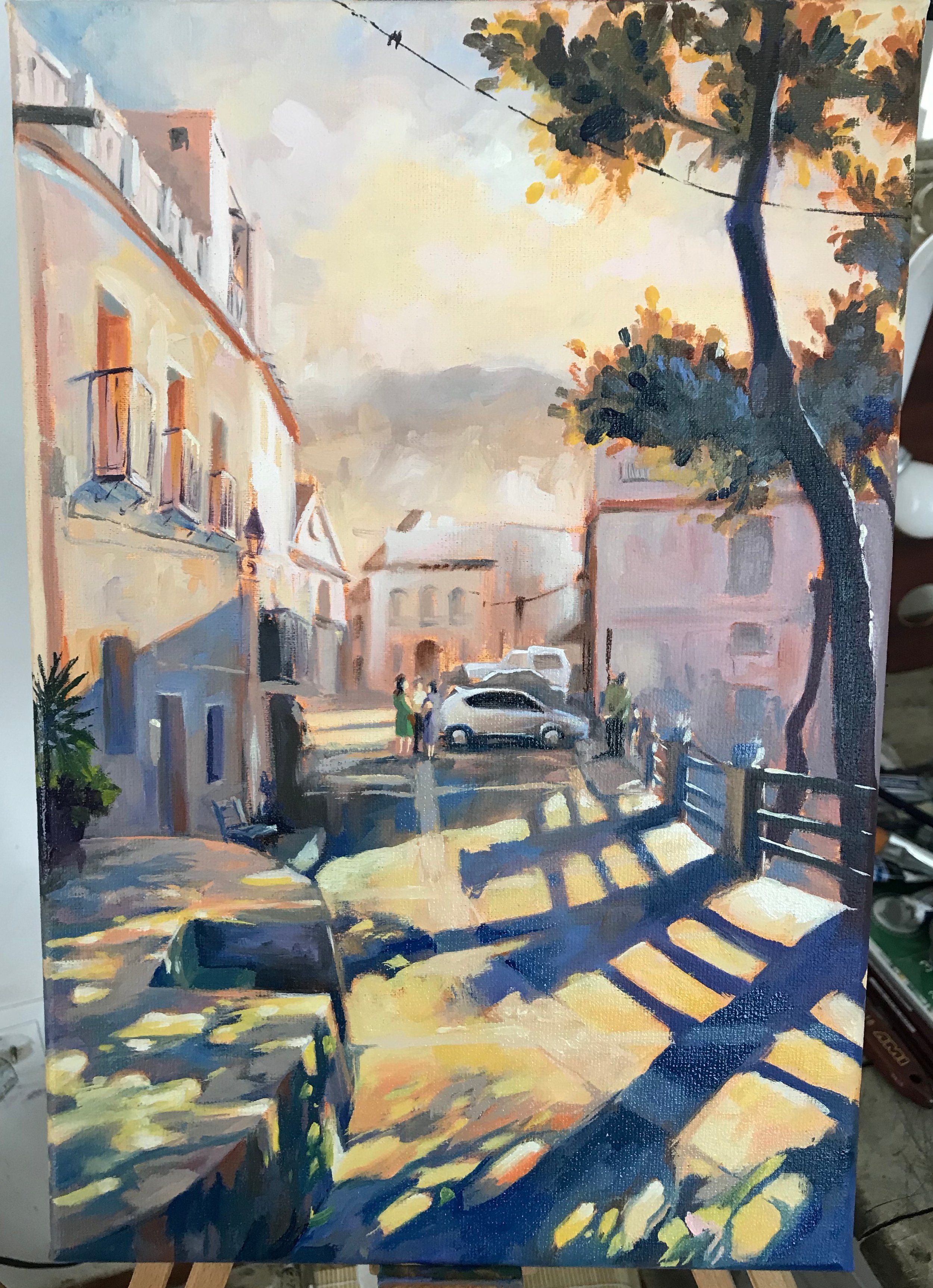
The town square by Sarina Reilingh.

Chair in the corner of one of the accommodations in Casa 3, by Sarina Reilingh.
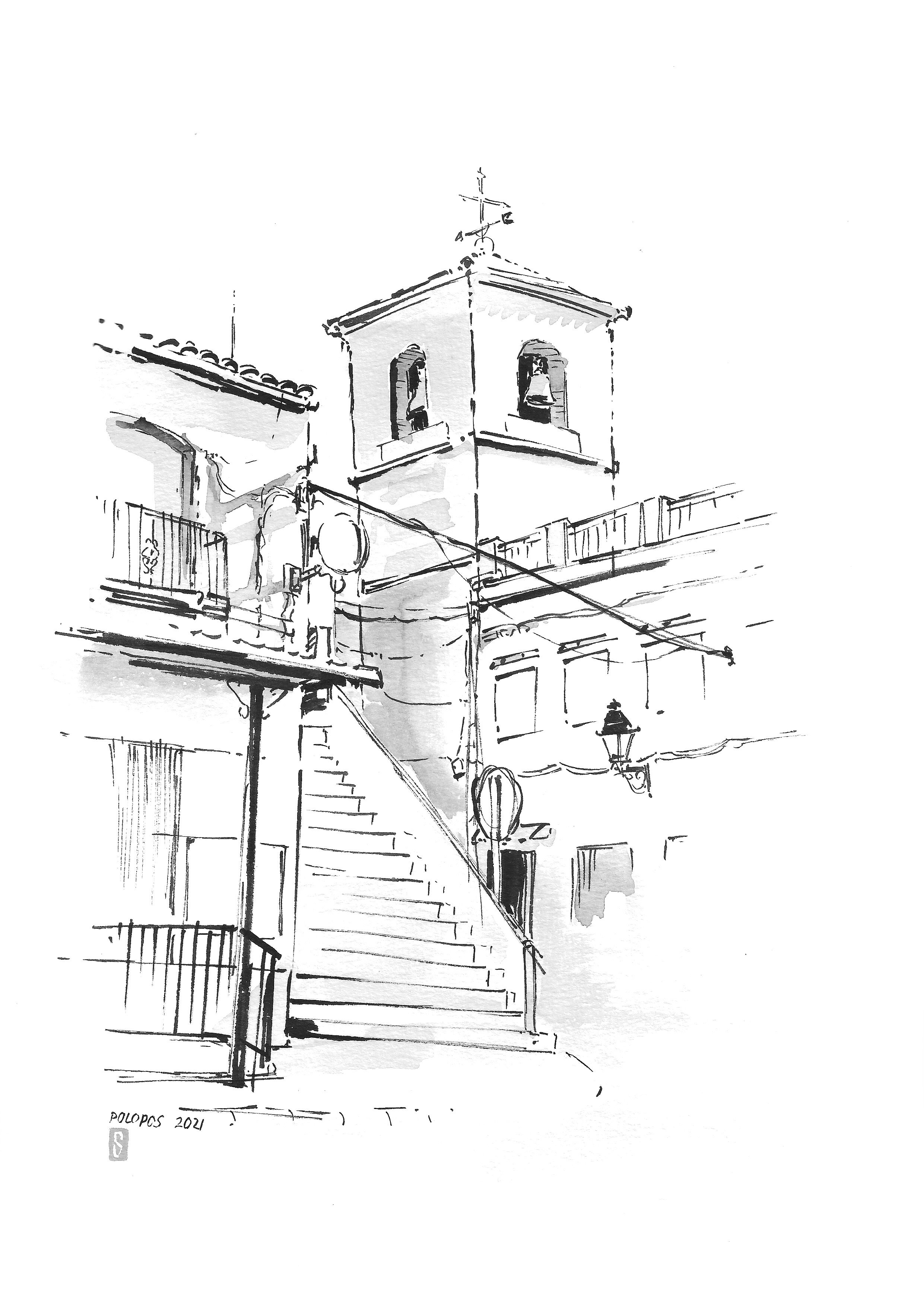
Pen drawing of the church in Polopos, by Sarina Reilingh.
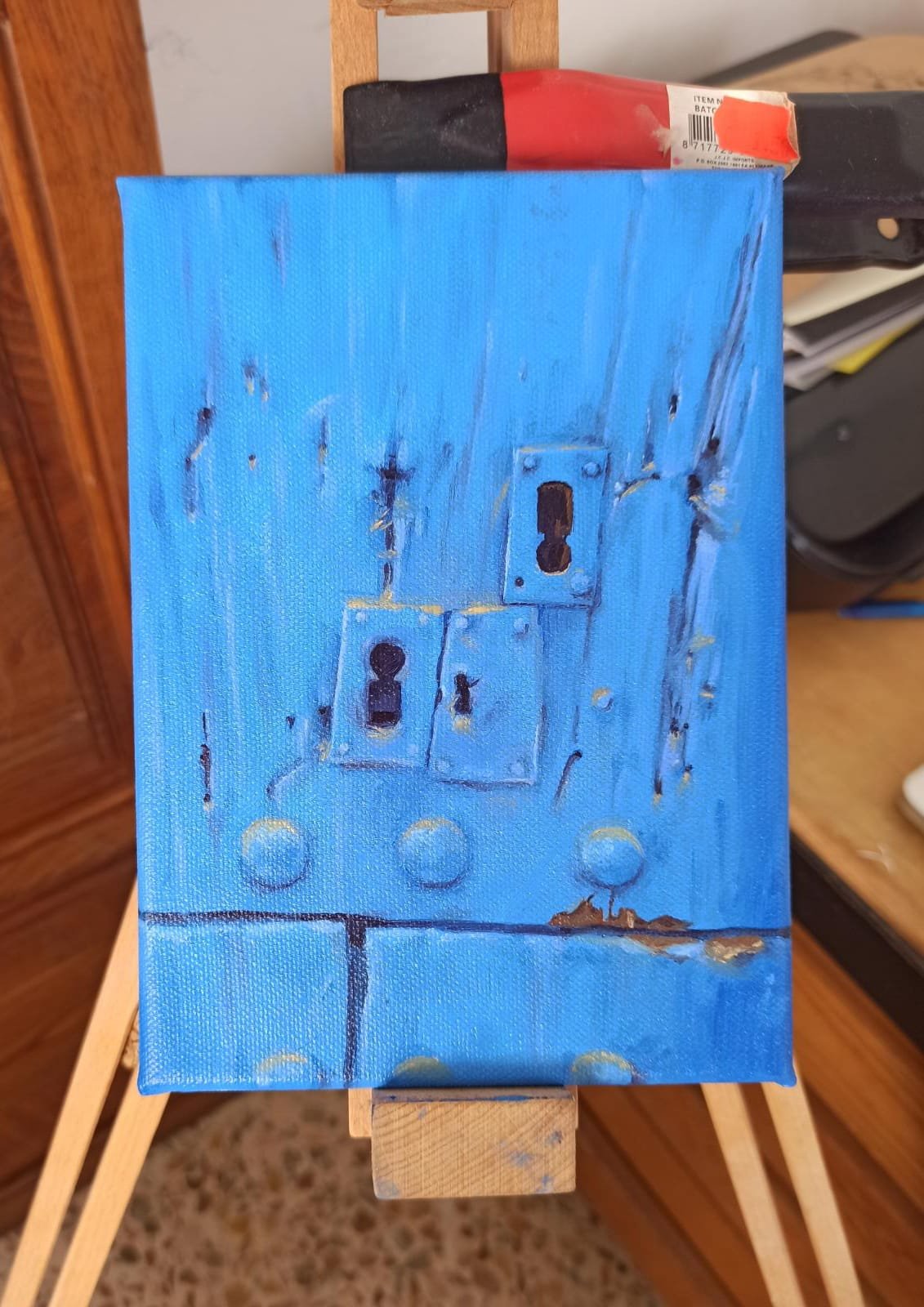
Detail of one of the many old wooden doors in Polopos, by Sarina Reilingh.

Painting on location in Polopos. Dutch artist Sarina Reilingh gifted us this painting. It is now on the wall in one of the accommodations in Casa 3.







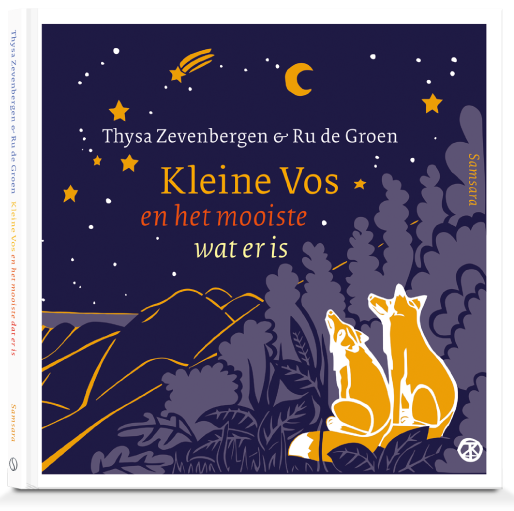
















Writer Federico García Lorca and composer Manuel de Falla visited Haza del Lino in 1926. Other famous artists that passed through were Gerald Brenan, Viginia Woolf and Gustave Doré.
The Alpujarra Artist Residence has space for two artists working simultaneously in their own separate workshop. These are funded by the Diputación de Granada and the Mancomunidad de Municipios de la Costa Tropical. Both studio’s are airconditioned and each has its own bathroom and toilet. There is a small shared kitchen with a microwave, a coffee machine, a cooker and a fridge. The studio’s are located on the other side of town, 300 meters from Casa 3.
CALL FOR
ARTISTS
2025-2026
CLICK HERE
Our Accommodations
There are two rooms available in Casa 3 where artists will stay for the duration of their residency. Both rooms have their own bathroom, toilet, airconditioning and an outdoor space. There is a shared kitchen, a washing machine and fibre internet. There is free parking 50 meters from Casa 3. Accomodation is not free, but we keep our prices at a minimum to make a residency available for everyone.
Our location
Polopos is located at 800 meters above sea level overlooking the Mediterranean Sea. There is a restaurant and a bar, a fishmonger and a greengrocer come to the village weekly and a baker daily. The beach is a 15 minute drive and the nearest coastal town with supermarkets, restaurants, pharmacy and other at 20 minutes. Granada and Almería are an hours drive and Málaga an hour and a half.
FAQ
-
What does an Artist Residency cost?
An Artist Residency with us at Casa 3 in the Alpujarra costs 300 euro per two weeks. It is possible to bring a partner for 150 euro extra. Artists will have to pay their own travel expenses, food and drinks and the materials they work with. Further costs to consider are are travel insurance, car hire, excursions, etc.
-
What is included in the price?
Each artist will have their own studio to live in, with private bathroom, toilet, an outdoor space and their own private art studio. The kitchen is shared between the two artists staying with us and their possible partners. There is fiber internet, heating and airconditioning, towels, covers and sheets and a washer and a dryer.
-
Is there funding available?
As an art association, we are happy to assist in applying for personal grants for the artist. In principle, the initiative to apply for this support lies with the artist. For projects that benefit the village, such as works of art with a permanent character realised in public spaces, we apply for grants from the province of Granada, our municipality and the Mancomunidad of the Costa Tropical. Only artists specifically selected for this purpose are eligible for these grants.
-
How do I get to the Artist Residence?
We are an hour and a half drive from Málaga airport and one hour from Almería or Granada. The residence is located in Polopos, a village at 800 meter above sea level overlooking the Mediterranean Sea. We advise our artists to bring their own car or rent one.
-
What kind of services will I find in Polopos?
The village itself has a bar and a restaurant. A baker comes to the village 6 days a week, a fish monger comes on Tuesday and Friday and every Saturday a big van with fruit and vegetables drives up. The nearest supermarket is 15 minutes away at the bottom of the mountain, the nearest beach is also 15 minutes and the nearest town with a commercial center, a doctor and other fascilities is 20 minutes.
-
Do I need to be able to speak Spanish?
It is definitely a plus if you do, but it is not a necessity. Most of the Spanish population don’t speak other languages so it is easier to get in touch with them if you speak some Spanish. The restaurant in the village is owned by two Dutch couples who speak several languages.
Artists who worked and/or exhibited in Polopos:
Michael Housewright ~ Nick Fudge ~ Léna Lewis-King ~ Carina Meijer ~
Sarina Reilingh ~ Richard Raaphorst ~ Emma Plunkett ~ Úrsula Romero ~
Sandra Álvarez Muñoz ~ Fred Shively ~ Hillary Barmby ~
Armelle Boussidan ~ Beatrice Joya ~ Brie Adkins ~ Marcello von Schwartz ~
Boxie ~ Milan Nowak ~ Jelmar Starkenburg ~ Jaap Stiemer ~
Myriam Vela Blanca ~ Johanne Nordstrand ~ Sthom ~ Thysa Zevenbergen ~
Ilay den Boer
CALL FOR
ARTISTS
2025-2026
CLICK HERE

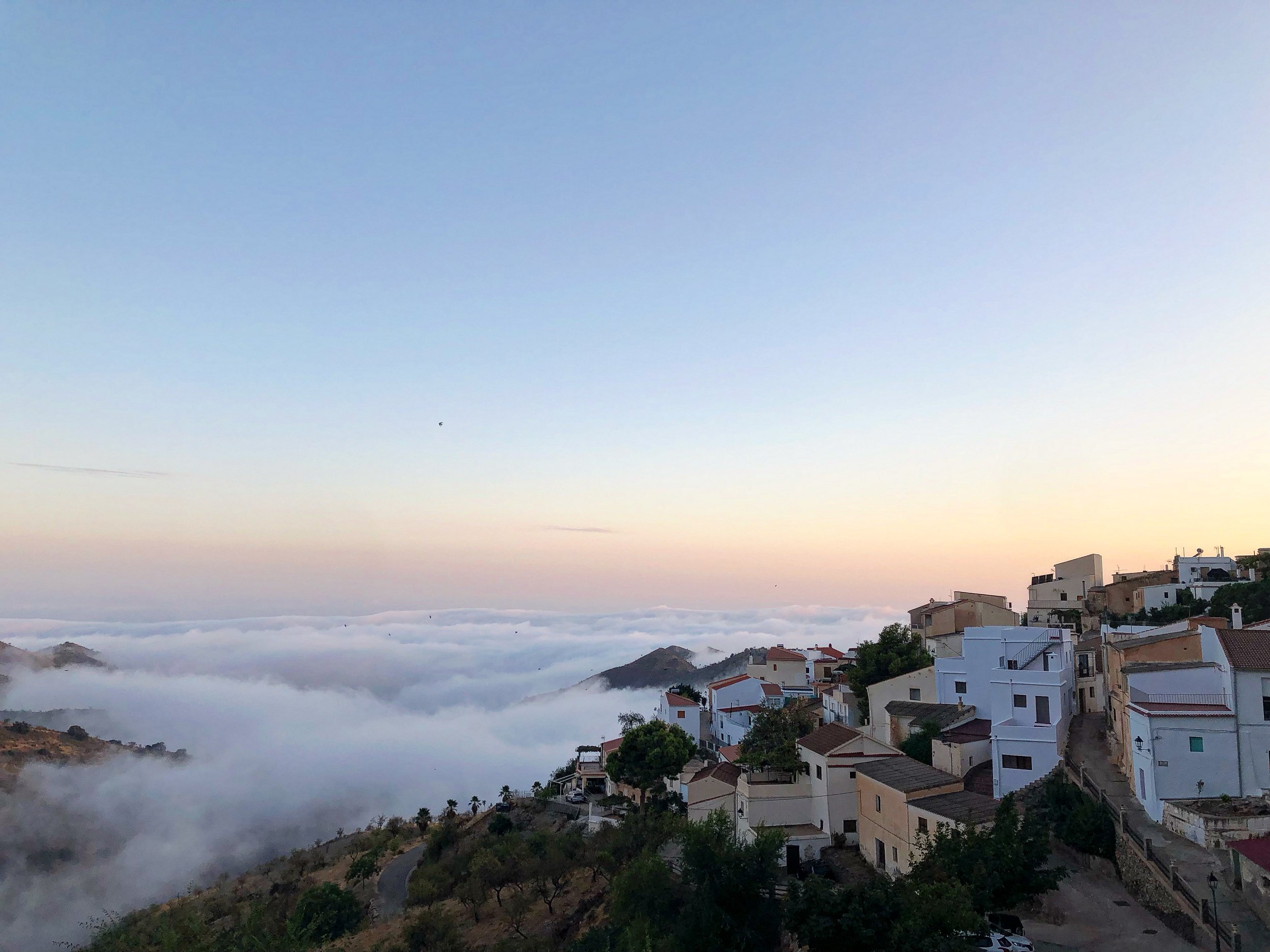




Boxie is the fourth artist in residence that we welcomed in Polopos. We first met Boxie and his girlfriend Pascale when they booked a stay with us in Casa 3 about two years ago, not as artists but as tourists.